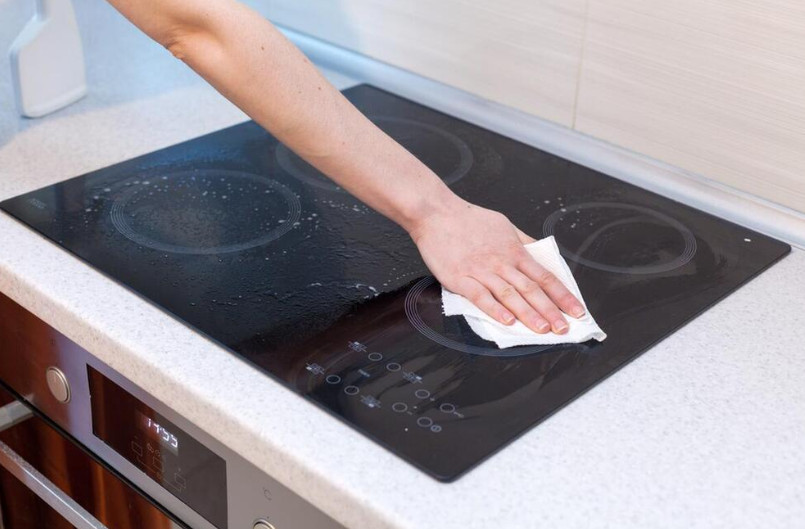Reviving Your Kitchen Counter: Effective Scratch Removal Techniques
Your kitchen countertop, whether it’s made of glass, ceramic, granite, or another smooth surface, is often prone to scratches and blemishes. These imperfections not only detract from the aesthetic appeal of your kitchen but can also affect the overall functionality of your workspace. Over time, everyday activities—such as chopping, placing hot pots, or even just general wear and tear—can lead to unsightly marks and scratches. Fortunately, restoring the shine and integrity of your countertop surfaces is entirely possible with some straightforward methods. In this article, we will explore various effective techniques for removing scratches and rejuvenating the appearance of your kitchen countertop.
Understanding the Nature of Your Countertop Material
Before diving into the scratch removal process, it is crucial to understand the specific material of your countertop. Different materials respond differently to various cleaning agents and techniques. For instance, glass and ceramic surfaces are generally more resistant to stains but can be easily scratched if not handled properly. On the other hand, granite and marble offer a luxurious feel but require special care due to their porous nature. Knowing your countertop's material will help you choose the most effective and safe cleaning method suited to its unique properties.
Gathering Your Cleaning Supplies
The first step in the scratch removal process is to gather the necessary materials. For this basic yet effective method, you will need:
- Non-gel toothpaste: This mild abrasive works wonders for light scratches and helps to polish the surface.
- Baking soda: Known for its powerful cleaning properties, it can enhance the effectiveness of the toothpaste and remove tougher stains.
- Soft cloth or sponge: A gentle applicator is essential to avoid further damaging the surface during the cleaning process.
- Water: Clean water is necessary for rinsing off the paste after application.
In addition to these items, consider having a few other tools on hand, such as a small bowl for mixing your paste, a spray bottle with water for additional rinsing, and a microfiber cloth to enhance the shine after cleaning.
Preparing the Cleaning Paste
Once you have gathered all your materials, it's time to create the cleaning paste that will serve as your secret weapon against scratches. In a small bowl, mix a few tablespoons of baking soda with just enough water to form a thick paste, similar in consistency to pudding. It is crucial to ensure that the mixture is thick enough to adhere to the countertop surface without dripping. If the paste is too runny, simply add more baking soda until you achieve the desired thickness. A well-prepared paste will not only adhere effectively but will also allow for better scrubbing without excessive dripping, which could make a mess of your kitchen.
Applying the Paste: Techniques for Success
With your paste prepared, it’s time to tackle the scratches that mar your countertop. Apply the baking soda paste generously over the scratched areas using a soft cloth or sponge. Employ light, circular motions to gently rub the paste into the scratches. It is essential to avoid applying too much pressure; aggressive scrubbing can exacerbate the damage instead of fixing it. For instance, if you find that the scratches are still visible after your initial efforts, do not be disheartened—continue to rub gently, and consider adding a bit more paste to the area. Depending on the depth and severity of the scratches, you may need to repeat this process a few times to achieve the desired outcome.
Exploring Alternative Methods: Toothpaste Alone
If the combination of baking soda and toothpaste does not yield satisfactory results, you might want to try using just the toothpaste. Applying a small amount of non-gel toothpaste directly on the scratch and rubbing it gently with your cloth or sponge can be a viable alternative. Toothpaste acts as a mild abrasive that can polish the surface and restore its shine effectively. Many homeowners have successfully used this method to rejuvenate their countertops, particularly if the scratches are not deeply embedded. Additionally, this technique is often seen as a quick fix for minor scuffs and blemishes that occasionally appear on well-used countertops.Finishing Touches: Polishing and Maintenance
After successfully treating the scratches, it's time to rinse off any residue. Use cold water to thoroughly wash the countertop, ensuring that all traces of the paste are removed. This is an important step, as leftover cleaning agents can lead to a dull appearance over time. Following rinsing, dry the surface with a soft, clean cloth. This final step not only removes any remnants of the cleaning agents but also enhances the shine of your countertop, making it look vibrant and fresh. For those seeking an extra gleam, consider applying a quality countertop polish after cleaning, particularly if you have granite or marble surfaces, to further protect them and extend their lifespan.
Important Tips and Precautions
While you work to restore your countertop’s luster, keep the following precautions in mind:
- Avoid excessive force: Over-scrubbing can lead to further scratches and damage, particularly on softer surfaces like laminate.
- Choose the right toothpaste: Stick to non-gel, colorless toothpaste without abrasive particles that could harm your surface. Gel toothpastes often contain dyes and additional chemicals that are not suitable for scratch removal.
- Regular maintenance: Implement a routine cleaning schedule to prevent the buildup of scratches and extend the life of your countertop. Regular cleaning can minimize the potential for scratches by keeping the surface free of debris.
- Test on inconspicuous areas: Before starting on visible areas, always test your cleaning mixture on a small, hidden section to ensure it won’t cause any harm.
By following these steps and tips, you can significantly improve the appearance of your kitchen countertop. Not only will you restore its shine, but you will also prolong its lifespan, making your kitchen a more inviting and functional space. With a little time and effort, you can transform your countertop from scratched and dull to smooth and gleaming. Embracing these techniques ensures your kitchen remains a centerpiece of both functionality and beauty.




